Pointing Calibration for Spaceborne Doppler Scatterometers
Abstract
Highlights
- Pointing errors, a critical challenge for measuring ocean surface currents from space, can be largely mitigated through a new calibration process.
- The calibration can be applied during ground processing, and, although it works best when prior information of ocean circulation is available, it will still perform acceptably when no prior information is used.
- The NASA/CNES Ocean Dynamics and Surface Exchange with the Atmosphere (ODYSEA) mission concept, currently in phase A, has a goal of measuring global winds and currents but must estimate pointing very accurately to meet its goals. The calibration process introduced here will allow ODYSEA to meet its science objectives.
- The calibration process can be implemented by any scanning Doppler scatterometer, such as the one in the proposed Chinese Ocean Surface Current multiscale Observation Mission (OSCOM).
Abstract
1. Introduction
2. Materials and Methods
2.1. Calibration Approach
2.2. Pointing Error Characteristics
2.3. Data Simulator
2.4. Ocean Prior Data
3. Results
3.1. Ocean Leakage
3.2. Time Varying Errors
3.3. Geographic Error Distribution
4. Discussion and Conclusions
Author Contributions
Funding
Data Availability Statement
Acknowledgments
Conflicts of Interest
References
- Bao, Q.; Dong, X.; Zhu, D.; Lang, S.; Xu, X. The Feasibility of Ocean Surface Current Measurement Using Pencil-Beam Rotating Scatterometer. IEEE J. Sel. Top. Appl. Earth Obs. Remote Sens. 2015, 8, 3441–3451. [Google Scholar] [CrossRef]
- Bao, Q.; Lin, M.; Zhang, Y.; Dong, X.; Lang, S.; Gong, P. Ocean Surface Current Inversion Method for a Doppler Scatterometer. IEEE Trans. Geosci. Remote Sens. 2017, 55, 6505–6516. [Google Scholar] [CrossRef]
- Rodríguez, E.; Wineteer, A.; Perkovic-Martin, D.; Gál, T.; Stiles, B.W.; Niamsuwan, N.; Rodriguez Monje, R. Estimating ocean vector winds and currents using a Ka-band pencil-beam Doppler scatterometer. Remote Sens. 2018, 10, 576. [Google Scholar] [CrossRef]
- Goldstein, R.M.; Zebker, H.A. Interferometric radar measurement of ocean surface currents. Nature 1987, 328, 707–709. [Google Scholar] [CrossRef]
- Rodríguez, E.; Bourassa, M.; Chelton, D.; Farrar, J.T.; Long, D.; Perkovic-Martin, D.; Samelson, R. The winds and currents mission concept. Front. Mar. Sci. 2019, 6, 438. [Google Scholar] [CrossRef]
- Rodriguez, E. On the optimal design of doppler scatterometers. Remote Sens. 2018, 10, 1765. [Google Scholar] [CrossRef]
- Wineteer, A.; Torres, H.S.; Rodriguez, E. On the Surface Current Measurement Capabilities of Spaceborne Doppler Scatterometry. Geophys. Res. Lett. 2020, 47, e2020GL090116. [Google Scholar] [CrossRef]
- Torres, H.; Wineteer, A.; Klein, P.; Lee, T.; Wang, J.; Rodriguez, E.; Menemenlis, D.; Zhang, H. Anticipated Capabilities of the ODYSEA Wind and Current Mission Concept to Estimate Wind Work at the Air–Sea Interface. Remote Sens. 2023, 15, 3337. [Google Scholar] [CrossRef]
- Lee, T.; Gille, S.; Ardhuin, F.; Bourassa, M.; Chang, P.; Cravatte, S.; Dibarboure, G.; Farrar, T.; Fewings, M.; Girard-Ardhuin, F. ODYSEA: A satellite mission to advance knowledge of ocean dynamics and air-sea interaction. In Proceedings of the EGU General Assembly 2025, Vienna, Austria, 27 April–2 May 2025. [Google Scholar] [CrossRef]
- Paduan, J.D.; Washburn, L. High-Frequency Radar Observations of Ocean Surface Currents. Annu. Rev. Mar. Sci. 2013, 5, 115–136. [Google Scholar] [CrossRef]
- Engen, G.; Johnsen, H. Sentinel-1 Doppler and Ocean Radial Velocity (RVL) Algorithm Definition. Technical Report S1-TN-NRT-53-0658, v1.7, Norut/SAR Mission Performance Cluster (SAR-MPC). 2024. Available online: https://sentiwiki.copernicus.eu/__attachments/1673968/S1-TN-NRT-53-0658%20-%20Sentinel-1%20doppler%20and%20Ocean%20Radial%20Velocity%20(RVL)%20ATBD%202024%20-%201.8.pdf?inst-v=788a56dd-6520-4a48-aff7-3fa71fc9e736 (accessed on 12 October 2025).
- Battaglia, A.; Kollias, P. Using Ice Clouds for Mitigating the EarthCARE Doppler Radar Mispointing. IEEE Trans. Geosci. Remote Sens. 2015, 53, 2079–2085. [Google Scholar] [CrossRef]
- Miao, Y.; Dong, X.; Bao, Q.; Zhu, D. Perspective of a Ku-Ka Dual-Frequency Scatterometer for Simultaneous Wide-Swath Ocean Surface Wind and Current Measurement. Remote Sens. 2018, 10, 1042. [Google Scholar] [CrossRef]
- Farrar, J.T.; D’Asaro, E.; Rodriguez, E.; Shcherbina, A.; Lenain, L.; Omand, M.; Wineteer, A.; Bhuyan, P.; Bingham, F.; Villas Boas, A.B. S-mode: The sub-mesoscale ocean dynamics experiment. Bull. Am. Meteorol. Soc. 2025, 106, E657–E677. [Google Scholar] [CrossRef]
- Torres, H.S.; Rodriguez, E.; Wineteer, A.; Klein, P.; Thompson, A.F.; Callies, J.; D’Asaro, E.; Perkovic-Martin, D.; Farrar, J.T.; Polverari, F. Airborne observations of fast-evolving ocean submesoscale turbulence. Commun. Earth Environ. 2024, 5, 771. [Google Scholar] [CrossRef]
- Wineteer, A.; Rodriguez, E.; Martin, D.P.; Torres, H.; Polverari, F.; Akbar, R.; Rocha, C. Exploring the Characteristics of Ocean Surface Winds at High Resolution with Doppler Scatterometry. Geophys. Res. Lett. 2024, 51, e2024GL113455. [Google Scholar] [CrossRef]
- Rodriguez, E.; Fernandez, D.E.; Peral, E.; Chen, C.W.; De Bleser, J.W.; Williams, B. Wide-swath altimetry: A review. In Satellite Altimetry Over Oceans and Land Surfaces; CRC Press: Boca Raton, FL, USA, 2017; pp. 71–112. [Google Scholar]
- Dibarboure, G.; Ubelmann, C.; Flamant, B.; Briol, F.; Peral, E.; Bracher, G.; Vergara, O.; Faugère, Y.; Soulat, F.; Picot, N. Data-Driven Calibration Algorithm and Pre-Launch Performance Simulations for the SWOT Mission. Remote Sens. 2022, 14, 6070. [Google Scholar] [CrossRef]
- Ubelmann, C.; Dibarboure, G.; Flamant, B.; Delepoulle, A.; Vayre, M.; Faugère, Y.; Prandi, P.; Raynal, M.; Briol, F.; Bracher, G.; et al. Data-Driven Calibration of SWOT’s Systematic Errors: First In-Flight Assessment. Remote Sens. 2024, 16, 3558. [Google Scholar] [CrossRef]
- Marsh, R.; Van Sebille, E. Ocean Currents: Physical Drivers in a Changing World; Elsevier: Amsterdam, The Netherlands, 2021. [Google Scholar]
- Torres, H.S.; Klein, P.; Menemenlis, D.; Qiu, B.; Su, Z.; Wang, J.; Chen, S.; Fu, L.L. Partitioning Ocean Motions Into Balanced Motions and Internal Gravity Waves: A Modeling Study in Anticipation of Future Space Missions. J. Geophys. Res. Ocean. 2018, 123, 8084–8105. [Google Scholar] [CrossRef]
- Molod, A.; Takacs, L.; Suarez, M.; Bacmeister, J. Development of the GEOS-5 atmospheric general circulation model: Evolution from MERRA to MERRA2. Geosci. Model Dev. 2015, 8, 1339–1356. [Google Scholar] [CrossRef]
- Strobach, E.; Molod, A.; Trayanov, A.; Forget, G.; Campin, J.M.; Hill, C.; Menemenlis, D. Three-to-Six-Day Air–Sea Oscillation in Models and Observations. Geophys. Res. Lett. 2020, 47, e2019GL085837. [Google Scholar] [CrossRef]
- Arbic, B.; Alford, M.; Ansong, J.; Buijsman, M.; Ciotti, R.; Farrar, J.T.; Hallberg, R.; Henze, C.; Hill, C.; Luecke, C.; et al. A Primer on Global Internal Tide and Internal Gravity Wave Continuum Modeling in HYCOM and MITgcm. New Front. Oper. Oceanogr. 2018, 307–391. [Google Scholar]
- Pujol, M.I.; Faugère, Y.; Taburet, G.; Dupuy, S.; Pelloquin, C.; Ablain, M.; Picot, N. DUACS DT2014: The new multi-mission altimeter data set reprocessed over 20 years. Ocean Sci. 2016, 12, 1067–1090. [Google Scholar] [CrossRef]
- Bonjean, F.; Lagerloef, G.S.E. Diagnostic Model and Analysis of the Surface Currents in the Tropical Pacific Ocean. J. Phys. Oceanogr. 2002, 32, 2938–2954. [Google Scholar] [CrossRef]
- Chelton, D.B.; Schlax, M.G.; Samelson, R.M.; Farrar, J.T.; Molemaker, M.J.; McWilliams, J.C.; Gula, J. Prospects for future satellite estimation of small-scale variability of ocean surface velocity and vorticity. Prog. Oceanogr. 2019, 173, 256–350. [Google Scholar] [CrossRef]
- Academy, N. Thriving on Our Changing Planet; The National Academies Press: Washington, DC, USA, 2018. [Google Scholar] [CrossRef]
- Du, Y.; Dong, X.; Jiang, X.; Zhang, Y.; Zhu, D.; Sun, Q.; Wang, Z.; Niu, X.; Chen, W.; Zhu, C. Ocean surface current multiscale observation mission (OSCOM): Simultaneous measurement of ocean surface current, vector wind, and temperature. Prog. Oceanogr. 2021, 193, 102531. [Google Scholar] [CrossRef]
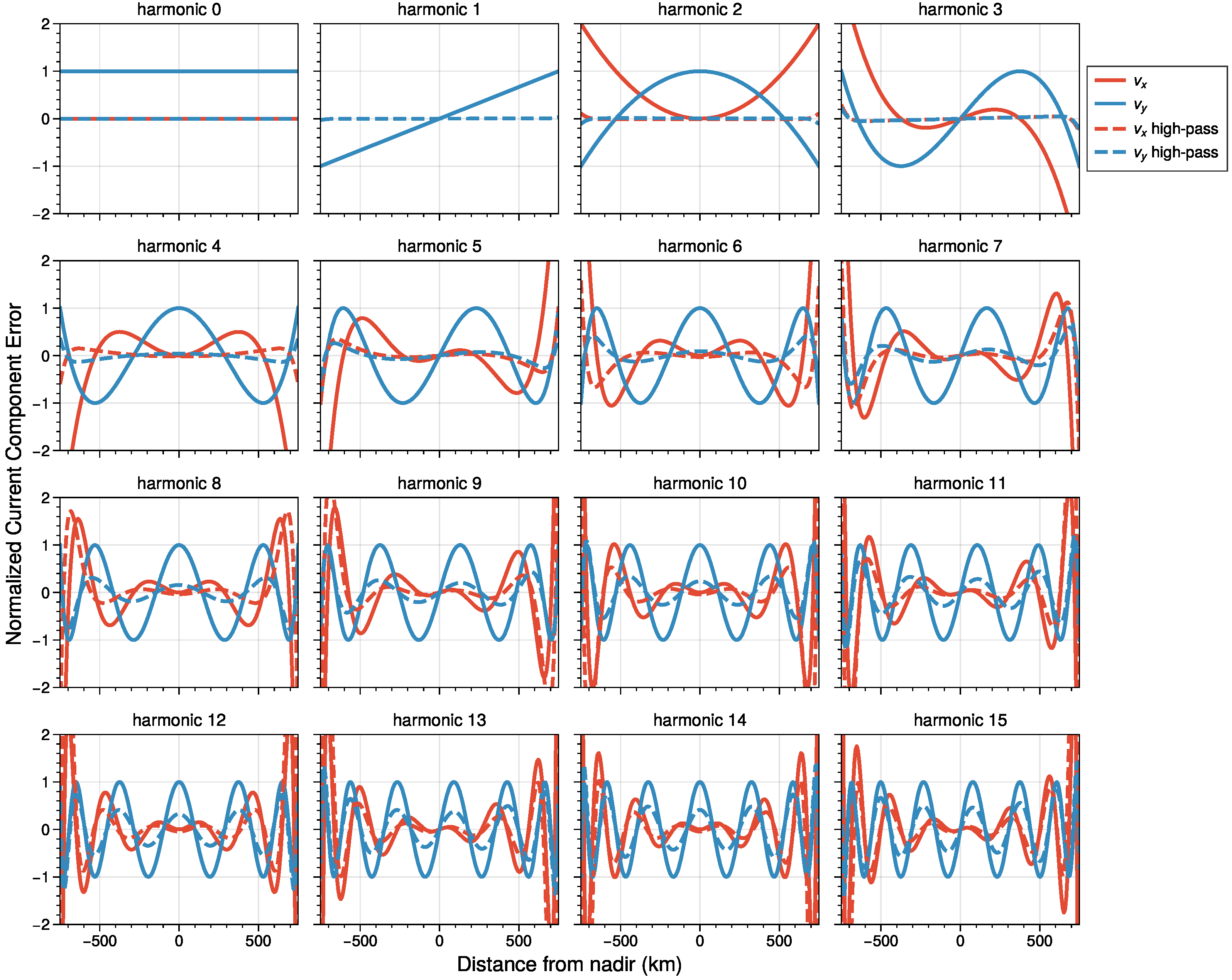
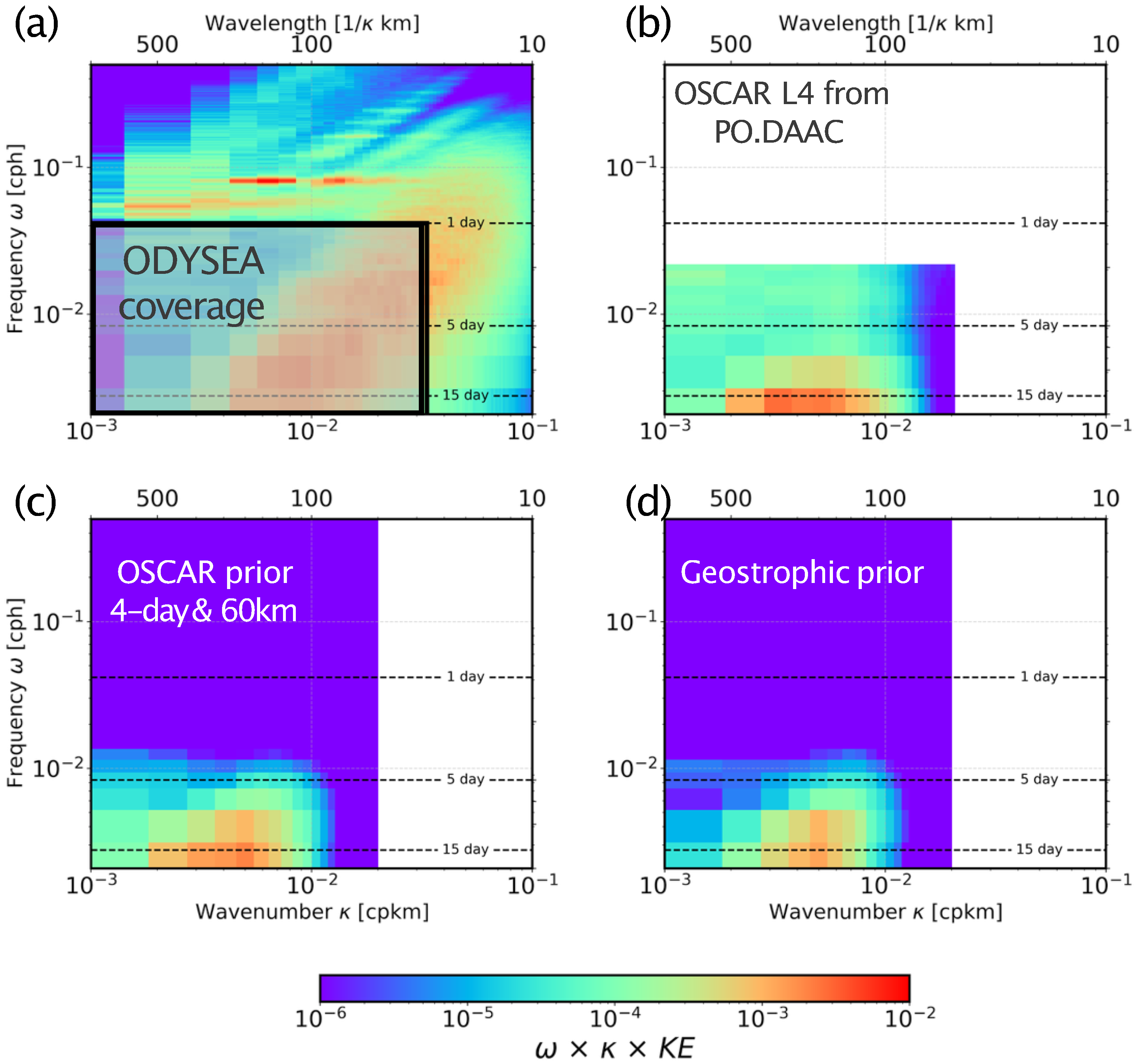
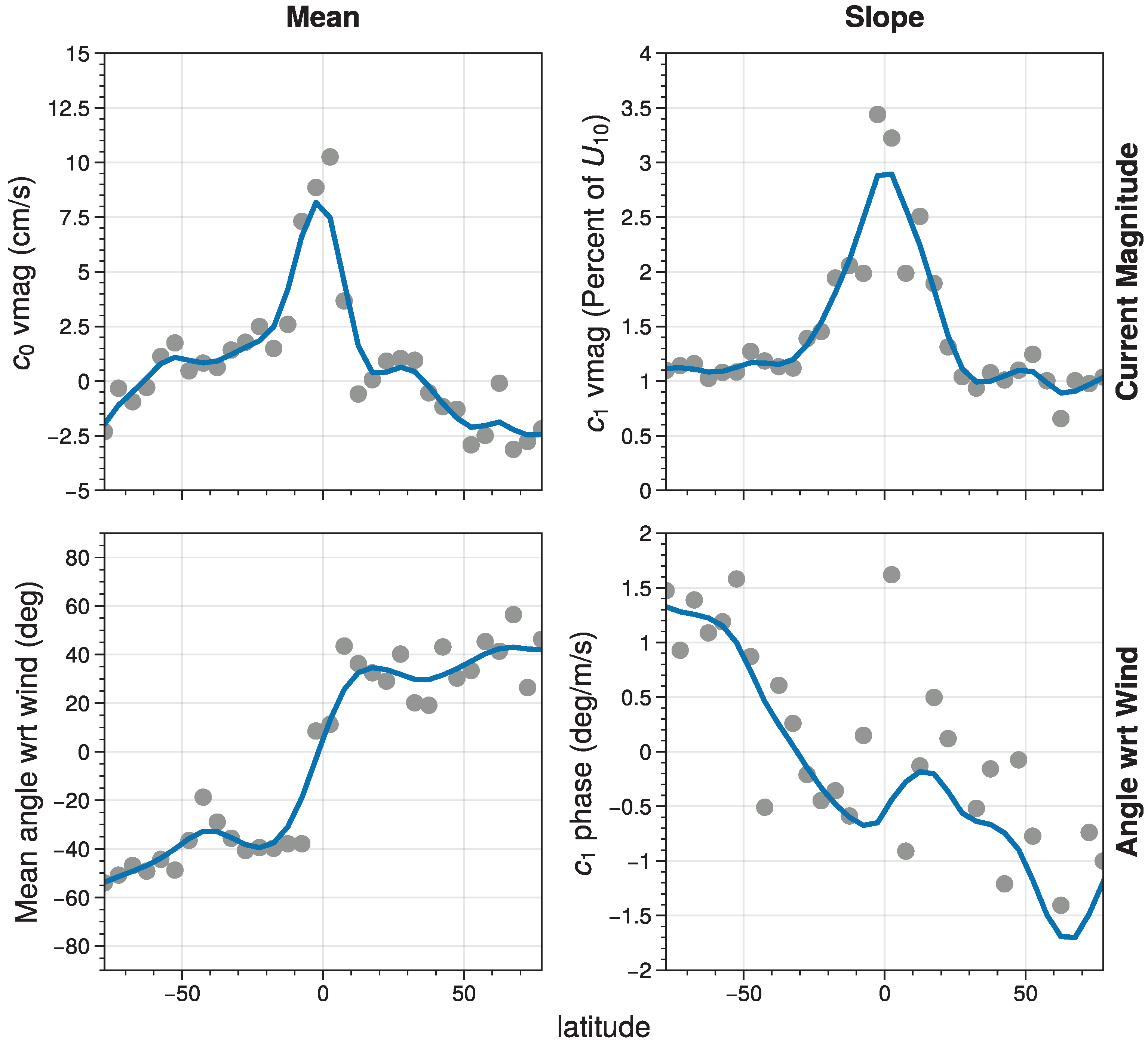
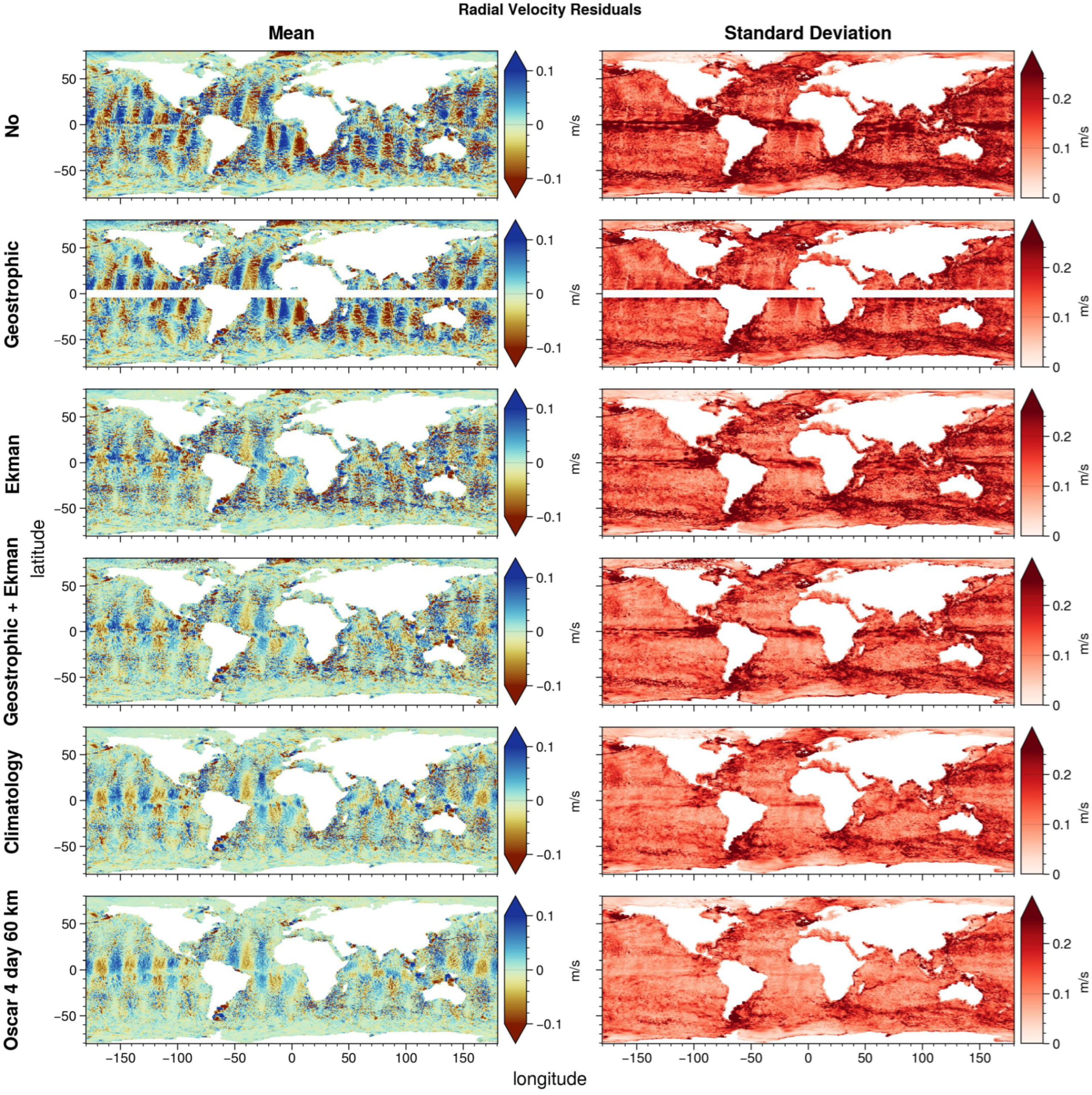
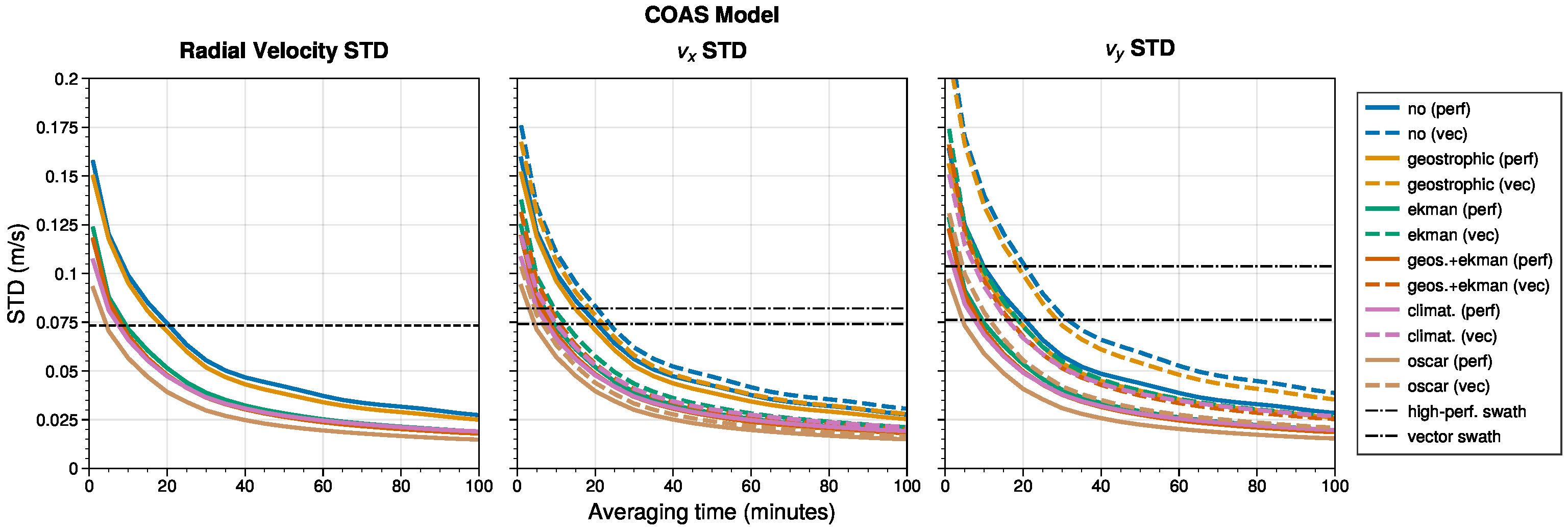

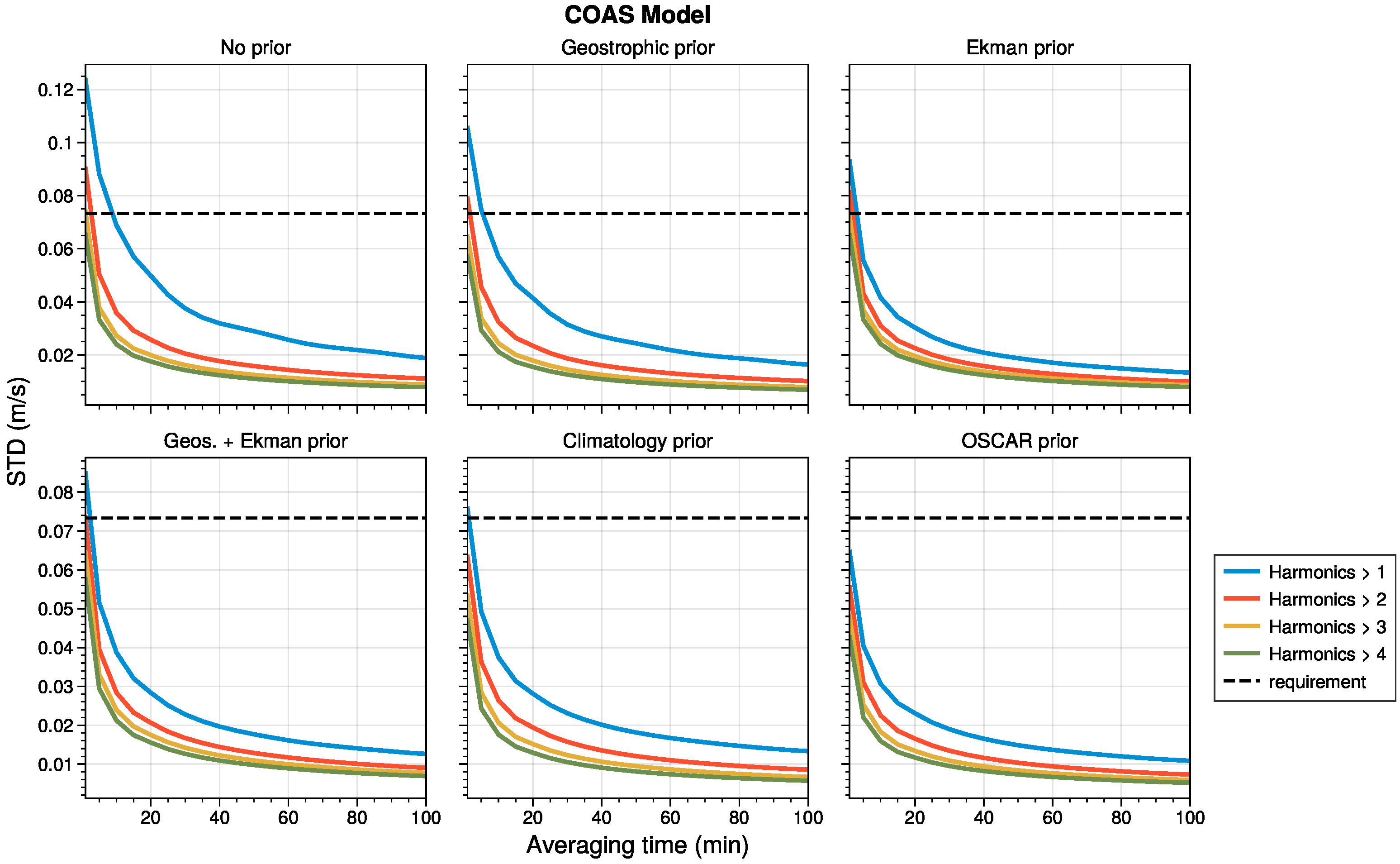
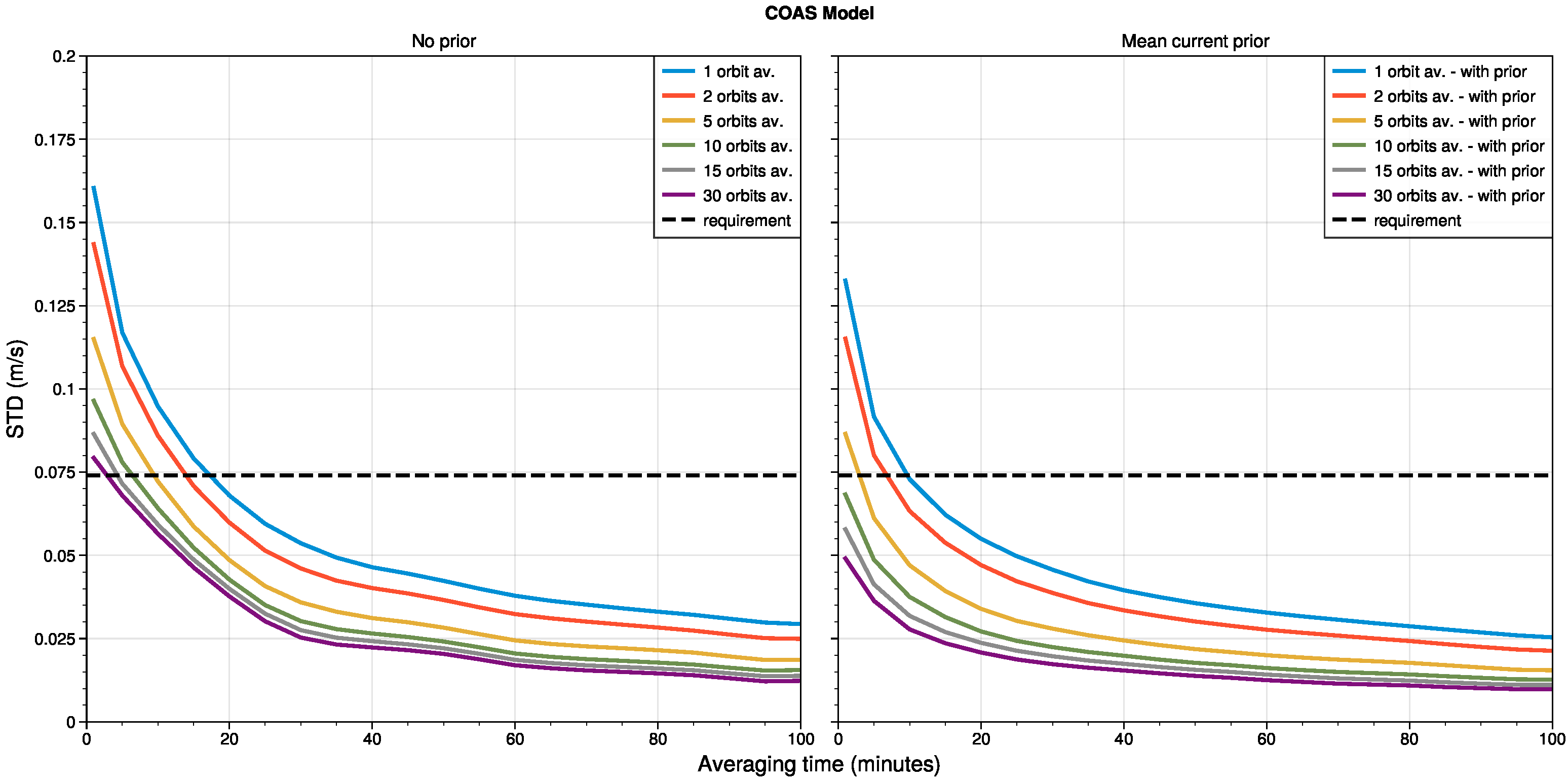
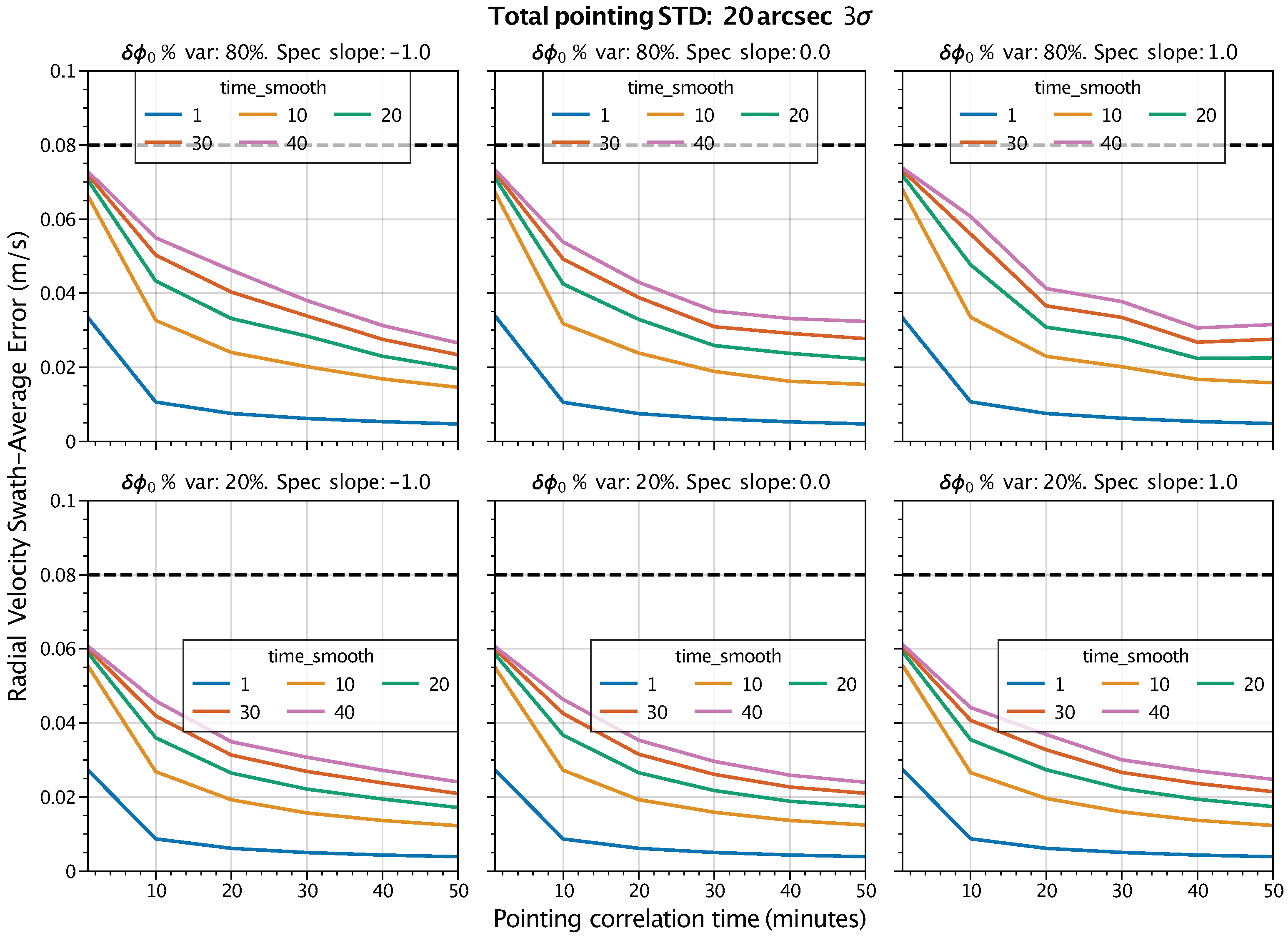
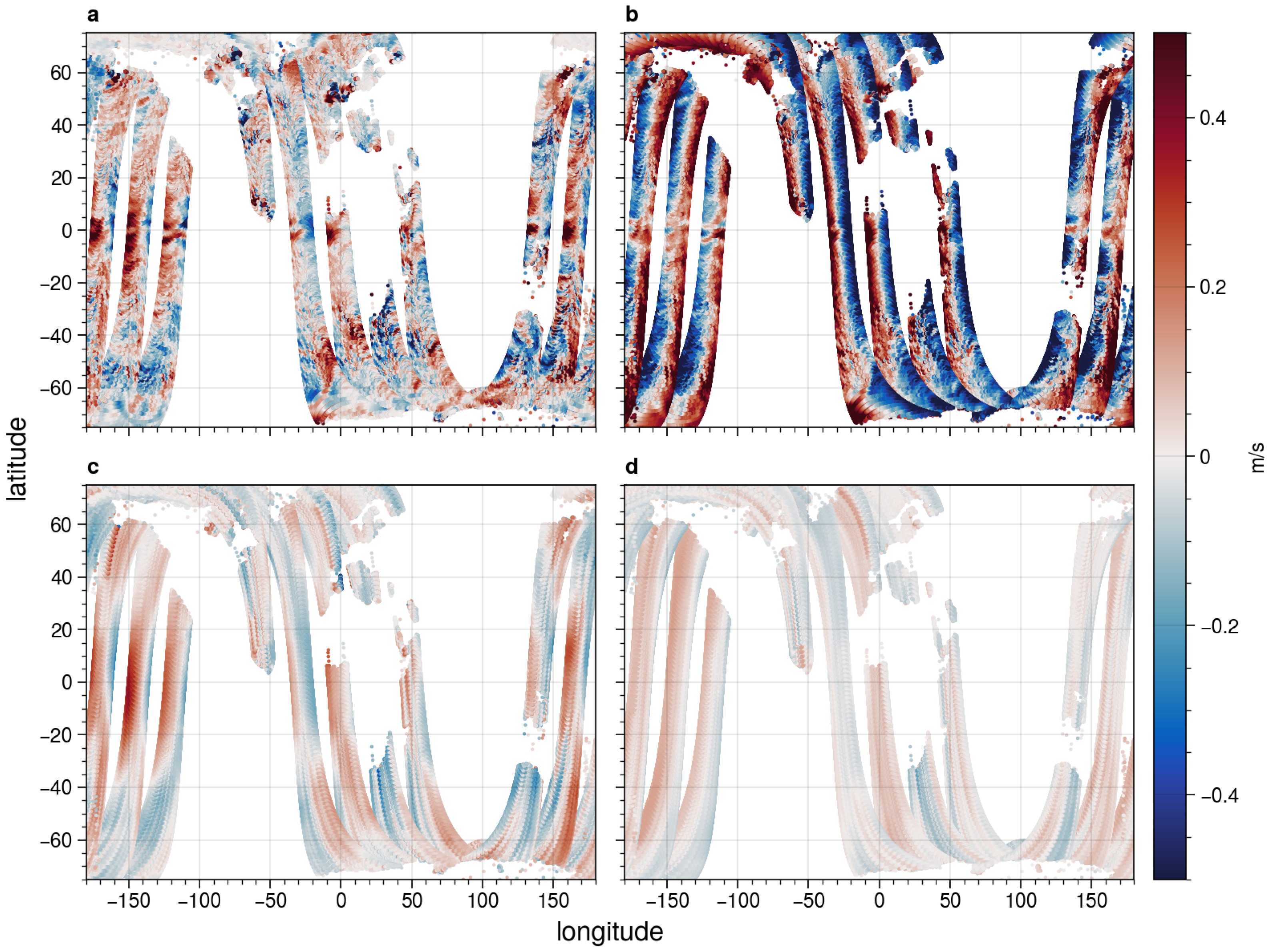

Disclaimer/Publisher’s Note: The statements, opinions and data contained in all publications are solely those of the individual author(s) and contributor(s) and not of MDPI and/or the editor(s). MDPI and/or the editor(s) disclaim responsibility for any injury to people or property resulting from any ideas, methods, instructions or products referred to in the content. |
© 2025 by the authors. Licensee MDPI, Basel, Switzerland. This article is an open access article distributed under the terms and conditions of the Creative Commons Attribution (CC BY) license (https://creativecommons.org/licenses/by/4.0/).
Share and Cite
Rodríguez, E.; Torres, H.; Wineteer, A.G.; Blondel, A.; Ubelmann, C. Pointing Calibration for Spaceborne Doppler Scatterometers. Remote Sens. 2025, 17, 3486. https://doi.org/10.3390/rs17203486
Rodríguez E, Torres H, Wineteer AG, Blondel A, Ubelmann C. Pointing Calibration for Spaceborne Doppler Scatterometers. Remote Sensing. 2025; 17(20):3486. https://doi.org/10.3390/rs17203486
Chicago/Turabian StyleRodríguez, Ernesto, Hector Torres, Alexander G. Wineteer, Antoine Blondel, and Clément Ubelmann. 2025. "Pointing Calibration for Spaceborne Doppler Scatterometers" Remote Sensing 17, no. 20: 3486. https://doi.org/10.3390/rs17203486
APA StyleRodríguez, E., Torres, H., Wineteer, A. G., Blondel, A., & Ubelmann, C. (2025). Pointing Calibration for Spaceborne Doppler Scatterometers. Remote Sensing, 17(20), 3486. https://doi.org/10.3390/rs17203486





